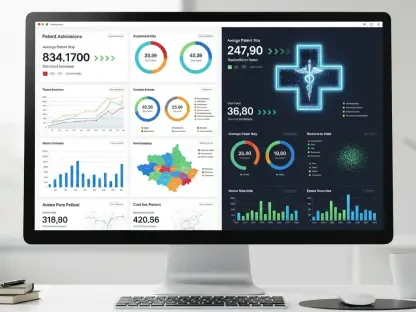Senior living organizations are navigating a rapidly evolving landscape, driven by changing demographics, rising operational costs, and shifting consumer expectations. To thrive in this dynamic environment, these organizations must embrace strategic agility and growth. This article explores key strategies that senior living providers can implement to achieve sustained excellence and health by 2025 and beyond.
Developing, Implementing, & Refreshing Your Strategic Plan
A strategic plan is essential for senior living organizations to make informed decisions and allocate resources effectively. The process begins with defining the organization’s mission, vision, and desired future state. This involves conducting market assessments, SWOT analysis, and financial reviews to understand the current state. The plan should balance operational, financial, regulatory, and social factors, ensuring relevance and alignment at all levels. Engaging stakeholders from across the organization is crucial for developing a comprehensive strategic plan. Regularly updating the plan to reflect changes in the market and organizational priorities ensures it remains a living document. This dynamic approach provides clear guidance for achieving organizational success and adapting to new challenges and opportunities.
In addition to its foundational purpose, a strategic plan serves as a critical tool for communication within the organization. It enables senior living entities to articulate their goals and strategies to staff, residents, families, and investors. This transparency helps garner support and trust, thereby fostering a culture of collaboration and shared vision. By integrating regular feedback loops into the strategic planning process, organizations can continually assess their progress and adjust their course as needed. This practice not only enhances strategic agility but also ensures that the organization remains focused on its mission while being responsive to external and internal changes.
Creating & Maintaining a Dynamic Financial Model
Financial discipline is increasingly vital as the senior living market expands and operational costs rise. A dynamic financial model, consisting of multiyear projections, allows organizations to adjust key assumptions and strategic scenarios. This model helps organizations quickly respond to changes in economic conditions and operational factors, enabling accurate projection of impacts on operating margins, cash positions, and other key performance indicators. Working with experienced advisors to design and develop robust financial models tailored to specific variables and circumstances can greatly benefit senior living providers. These models support strategic planning by evaluating the financial implications of proposed projects and policy shifts, aiding in regulatory excellence and informed reimbursement strategies.
Moreover, a well-crafted financial model can facilitate better decision-making by providing a clear picture of the organization’s financial health and future trajectory. It allows leaders to identify potential risks and opportunities, plan for various contingencies, and make informed choices about investments and resource allocation. Regularly updating the financial model to reflect current data and trends ensures that it remains a reliable tool for strategic planning and financial management. Additionally, involving key stakeholders in the financial planning process can enhance organizational buy-in and ensure that financial strategies are aligned with broader organizational goals and mission.
Diversifying Service Offerings
As consumer demands evolve, particularly with younger generations entering the market, senior living organizations need to diversify their service offerings to remain competitive and relevant. Investments in new services, capabilities, and technologies are integral to aligned growth. These could include physical expansions like wellness centers and activity spaces, as well as non-brick-and-mortar services such as home health programs, telemedicine, and meal delivery services. Before launching new services, organizations should evaluate their technological and operational readiness, potential financial impacts, and alignment with their strategic plans. Market surveys and focus groups can provide valuable insights into resident needs, ensuring that new offerings enhance the overall resident experience.
Furthermore, diversifying service offerings not only helps meet the changing needs and preferences of residents but also opens up new revenue streams and business opportunities. By staying attuned to market trends and consumer feedback, senior living providers can develop innovative services that set them apart from competitors. This proactive approach fosters a culture of continuous improvement and ensures that the organization remains agile and adaptable in a fast-paced industry. Additionally, leveraging technology to enhance service delivery can improve operational efficiency and resident satisfaction, ultimately contributing to the long-term success and growth of the organization.
Partnering With Those Who Share Your Mission
Building partnerships with like-minded local, regional, and national organizations can drive significant benefits, including enhanced community engagement, improved resident well-being, and higher staff job satisfaction. Partnerships could range from formal agreements like joint ventures and affiliations to collaborative arrangements with healthcare providers that ensure a continuum of care. Engaging with volunteer organizations and educational institutions can strengthen ties with the community and enrich resident services. Identifying partners whose mission and culture align with those of the senior living organization is crucial for successful collaborations. A thorough exploration of partnership opportunities and the establishment of evaluation criteria for potential partners are recommended to maximize the benefits of these collaborations.
Moreover, fostering strong partnerships can amplify the impact of the organization’s efforts by pooling resources, expertise, and networks. Collaborative ventures can lead to the development of innovative programs and services that enhance the quality of life for residents. Additionally, these partnerships can provide valuable support during times of crisis or change, helping the organization navigate challenges more effectively. By cultivating a robust network of allies and collaborators, senior living organizations can build a resilient and supportive community that promotes shared goals and values. This collaborative approach not only enhances the organization’s reputation and influence but also contributes to the overall well-being and satisfaction of residents and staff.
Investing in Recruitment & Retention of Top Talent
The senior living industry has faced significant workforce challenges, especially post-2020. Addressing talent optimization through innovative recruitment and retention strategies is fundamental for long-term success. Organizations should consider leveraging external resources and professional networks for recruitment, evaluating wage and benefit competitiveness, and fostering a diverse and inclusive work culture. Investing in technology that improves operational efficiency and reduces staff workload is also vital. Providing educational and training opportunities, along with leadership development programs, can help retain high-potential employees and prepare them for future leadership roles. Such investments not only enhance operational capabilities but also secure the organization’s future by building a committed and skilled workforce.
In addition to bolstering recruitment and retention efforts, senior living organizations must prioritize creating a positive and supportive work environment. This includes recognizing and rewarding employee contributions, offering flexible work arrangements, and promoting work-life balance. By valuing and supporting their staff, organizations can foster a loyal and motivated workforce that is committed to delivering high-quality care and services. Additionally, establishing clear career pathways and opportunities for advancement can increase employee engagement and satisfaction. By addressing workforce challenges proactively and strategically, senior living providers can build a strong, capable, and dedicated team that is essential for achieving long-term success.
Recruiting, Educating, & Leveraging Your Board
Senior living organizations are currently navigating a fast-changing landscape shaped by shifting demographics, increasing operational costs, and evolving consumer expectations. To remain competitive and successful in this dynamic environment, these organizations must adopt strategic agility and foster growth.
Key strategies for sustained excellence and health in senior living by 2025 and beyond include embracing technology to enhance resident experience, improving operational efficiencies, and leveraging data analytics to make informed decisions. Additionally, focusing on staff training and retention is crucial to providing high-quality care. Creating flexible and adaptive care models can also help meet the diverse needs of the aging population.
Furthermore, senior living providers should prioritize community engagement and partnerships, offering programs and services that promote wellness and social connectedness. By implementing these strategies, senior living organizations can not only adapt to current challenges but also thrive in the future, ensuring they continue to deliver exceptional care and enriching experiences for their residents.
Ultimately, the ability to evolve and innovate will be essential for senior living organizations aiming for sustained success and excellence well into the future.









